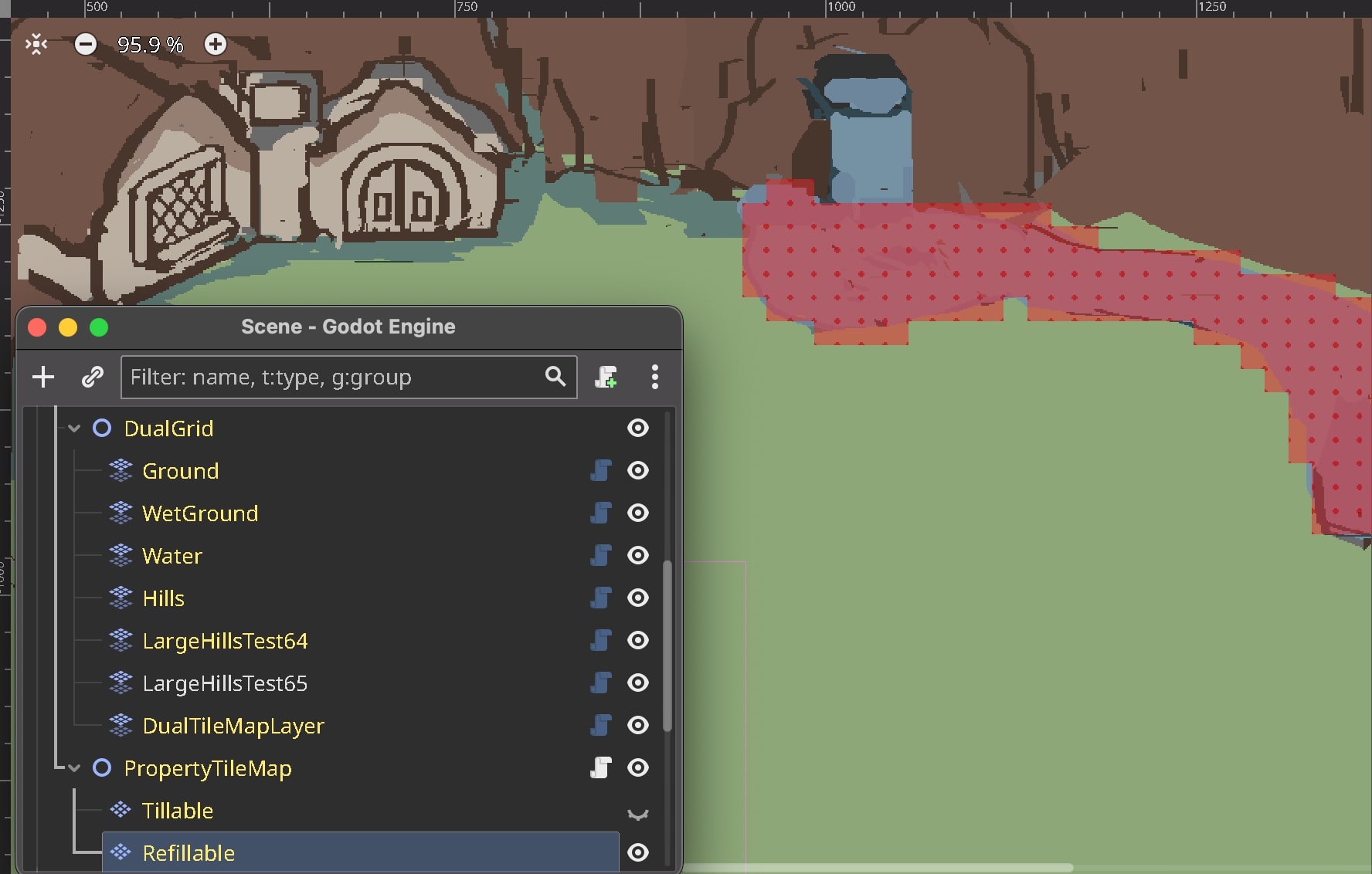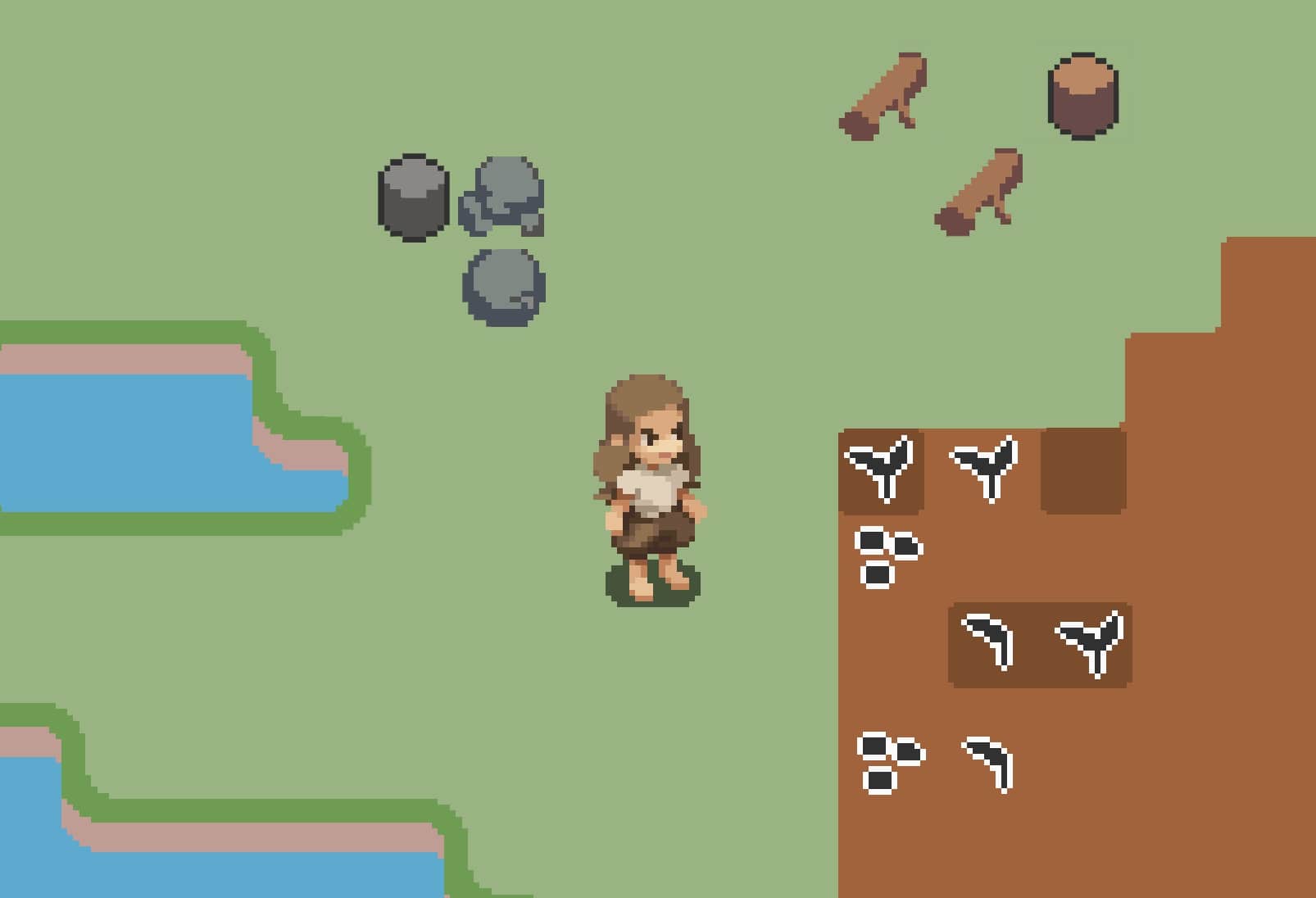The Challenge
Exponential art requirements
Each new terrain type requires dozens of transition tiles, making world expansion impractical
Complex manual coordination
Traditional systems demand separate handling for visuals, collision, and game logic
Dual-Grid Architecture
The Innovation
Tiles offset by half a grid unit create perfectly rounded corners with only 16 base tiles. Traditional tile systems require 256+ tiles and complex edge calculations to achieve similar results.
Property Painting System
Custom tooling that extends standard tile systems. Paint additional data layers over any area with brushes, dramatically reducing manual setup time while enabling precise control over game mechanics.

